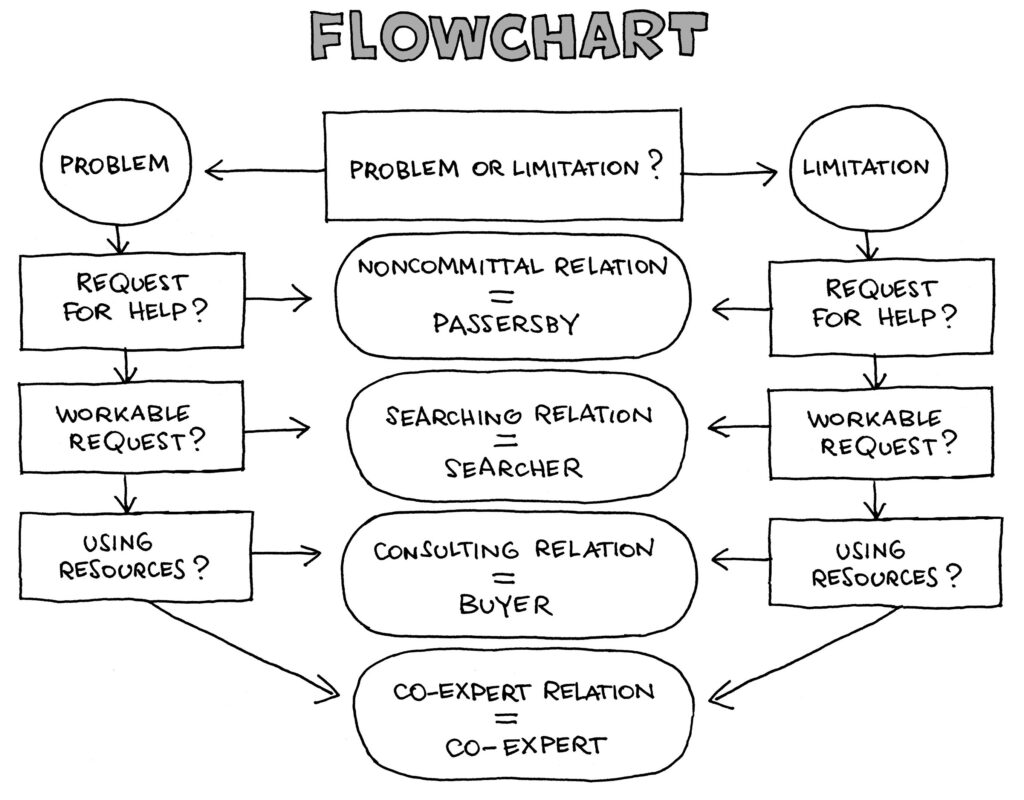Solution Focused Key Concepts
SOLUTION FOCUSED KEY CONCEPTS

In this section you can find a number of concepts that are central to the solution-oriented way of thinking.
ATTENTION:
work-in-progress. We regularly add key concepts.
Authentic Attention
Authentic attention stands for a sincere involvement with both the difficulties and the possibilities in the client’s life.
We show in word and deed that we are fully focused on the client. So, we give full attention to what your client offers while we empty our mind of the prejudices that block the access to the other.
Basic Axioms
Solution-focused thinking and working does not start from big overarching theories. It neither stems from purely personal views, convictions and opinions. We base our thinking and working on scientific insights from related fields which we forge into axioms.
The dictionary teaches us that an axiom stands for: ‘Unproven, but accepted as a basis’.
The SF axioms are:
1. Resource oriented thinking
2. Resilience
3. The Science of Well-being
4. Client-focused work
5. Systemic Thinking and Working
6. The four-leaf clover: cognition-emotion-behavioral interaction.
Disposable working hypothesis
In the psychological literature one often encounters theories or concepts that are regarded as infallible truths. In our profession – with the exception of the work of Daniel Kahneman – no Nobel prize-winning truths exist. That is why we like to translate theories or concepts as disposable working hypotheses: if they are useful and work, we use them. If not, we dispose of them and choose another concept to work with.
Yet, it’s best not to fall in love with your working concepts. We all know that love makes you blind.
If you do, the world is colored in the hue of your concepts and there is little place for alternatives.
The solution-focused paradigm is -for the moment- a pretty good working hypothesis. But remember: it is a tool, a great tool but just a tool.
Limitation
Everything for which no solution is thinkable. Examples: the past, the weather, the position of the stars, etc. It is useful to realize that you cannot solve limitations but that you can learn to deal with the consequences of a limitation in such a way that you have minimal trouble with it. The latter is a problem (see key concept ‘problem’).
Request for help
Thanks to the Formula P, we know that every request for help has a purpose. Viewed in this way, a request for help can always be understood as an invitation to cooperation.
Coaching
Creating a context in which you help the client to (again) help himself by supporting him so that he can make use of his resources and possibilities to reach his goal.
Context elements
Every human being is both an individual and a part of a system: a couple, family, friends. The work environment, church, sports club, neighborhood is also part of this system. However, a system consists of more than just physical persons.
Important context factors can be issues such as: values, faith, beliefs, (sub)culture, micro- and macro-economic circumstances, living environment, …
It is striking that coincidences that the client encounters in his life can also be important context factors.
A solution-focused vision implies that we take all of the context into account, choose (together with the client) which elements are relevant. Then we use those context elements as resources and/or we make changes in the context so that the possibility for change finds fertile ground.
Continuation question
Bearing in mind the adage “Change works best on what already works well”, the solution-focused approach often uses the following question: ‘what are the things in your life that, despite your problems, are still worth doing?
Consulting working relationship, also known as: consulting position
The client has a workable request for help but is not able to use his resources. Those clients come to consult with us on the question of how they can access and use their resources again. In plain English, ‘consult’ means that the client asks for help, advice and guidance.
Coping question
This simple question gently guides the desperate client back to what is still going well despite everything. Especially useful when clients indicate that they that they fall off the of the scale (Minus 10, no: I’m at minus 34!). Never forget to give those clients recognition for their despondent feeling and congratulate them on their effort to keep going (they are talking to us!).
Co-expert working relationship Also called: co-expert position
In this position, the client formulates a workable request for help and indicates that he not only has the correct resources at his disposal, but also that he knows how to use them to solve his problem. Even more, the client indicates that he has learned to help himself and that the coach only has to be a supporter.
Goal setting question
| What | Some Content and process |
| Must | be Imperative: assistance is not without obligation |
| We | Collaboration: team |
| Talk about | language (verbal, non-verbal and transverbal) is our most important tool |
| Today | it happens here and now |
| So that | indicates the direction of the outcome |
| this conversation | The action is in the interaction and the working relationship is the engine of change |
| will be | Future orientation and prediction |
| useful | utility is central |
| to you | The client is the only one who counts in the cooperation that coaching/therapy is. |
| ? | The client becomes the owner of his own goals by answering the question. |
G-R-C
Extremely useful link between the concepts of Goal, Resource and Compliments.
Without a goal, you and your client cannot know where you want to go to.
Without resources there is no fuel in the motor for change.
Without offering recognition and expressing appreciation a.k.a complimenting, you do not activate the resources of the client and you do not initiate the turbo in the motor for change which is the working relationship.
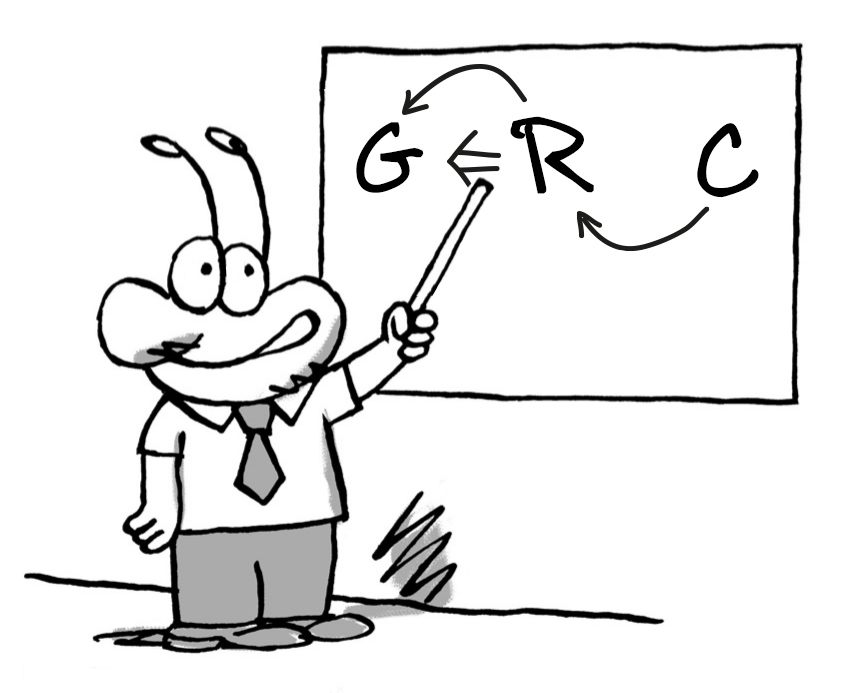
Recognition
Besides food, warmth and safety, Recognition is the most universal ‘currency’ that every human being needs.
Evidence-Based Model
The fetish of contemporary health care where one makes statements about the efficacy of an intervention for a generalized population. Although every clinician knows it is not always useful for the individual client, we have to participate or we run the risk of being banned from our profession. Luckily there is enough research to show that the solution focused approach is an evidence-based model. Yet, seasoned solution focused practitioners prefer doing what is useful for the client instead of following procedures.
Flowchart
Useful tool to assess the quality of the working relationship by means of four questions. Each position on the flowchart indicates which interventions are the most useful while following the minimax principle: use minimal energy as a coach to facilitate maximum response from your client.
Hope
Hope is to the human mind what oxygen is to our lungs (Froma Walsh)
Mandate
A mandate is the authority to arrange and handle matters on behalf of someone else. More precisely for our purposes, a mandate the authority we need to deserve from the client to offer himself the authority to take the necessary steps forward in his life.
Because we always fulfill different tasks, it is useful to keep in mind that we always have three mandates at the same time. Depending on the situation one of these mandates comes to the fore while the other two remain in the background.
We have AND a leadership mandate AND a coaching mandate AND a management mandate.
Two remarks:
*In the eyes of the person you are leading or coaching, you must earn your leadership and coaching mandate over and over again.
*Your management mandate is something else than a controlling mandate: in our profession, you cannot control, but you can manage.
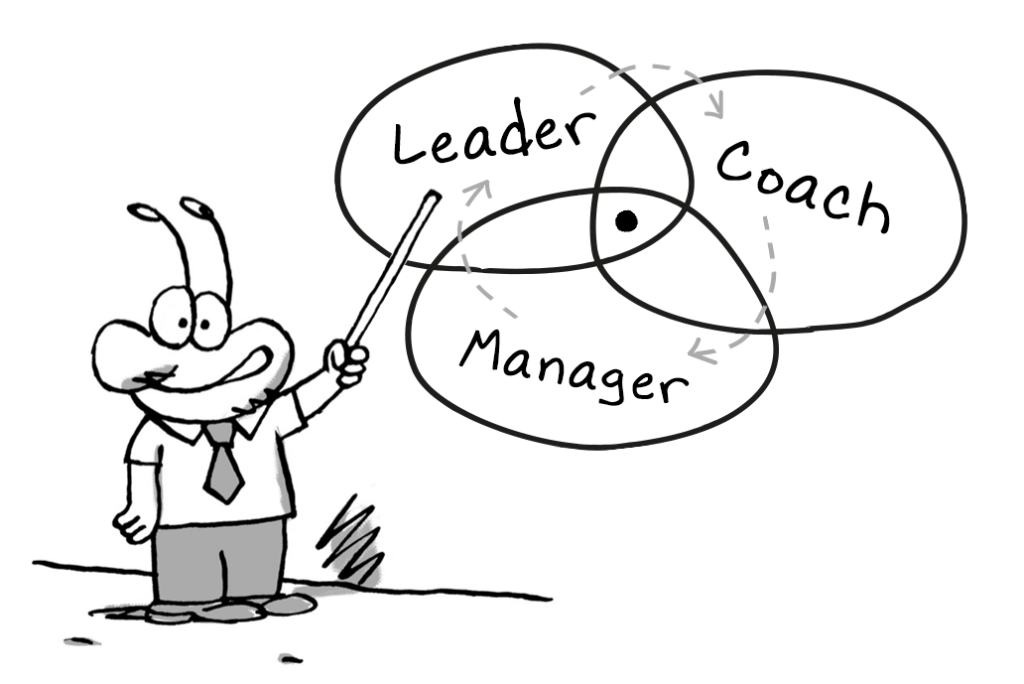
Image of Mankind
The solution-focused image of mankind assumes that every human being and every human system is fully equipped to cope with life. There are always things that are worth doing. There are always things that still work in spite of the problems. The result is that change works best on a foundation of what already is there.
Human Being
As a (temporary) phenomenon of evolution, a Human Being/Becoming is a neuronal computer encased in a biomechanical machine that lives in a socio-cultural swarm in physical space and (especially) in a high dimensional emotional and cognitive space with other human beings, where all members of the system are linked in parallel so they create emergent (self-organizing) behavior that is called intelligence by using reciprocal feedback through linguistic interaction (they talk and exchange ideas) and non-zero sum games.
Louis Cauffman, sol-conference 2007
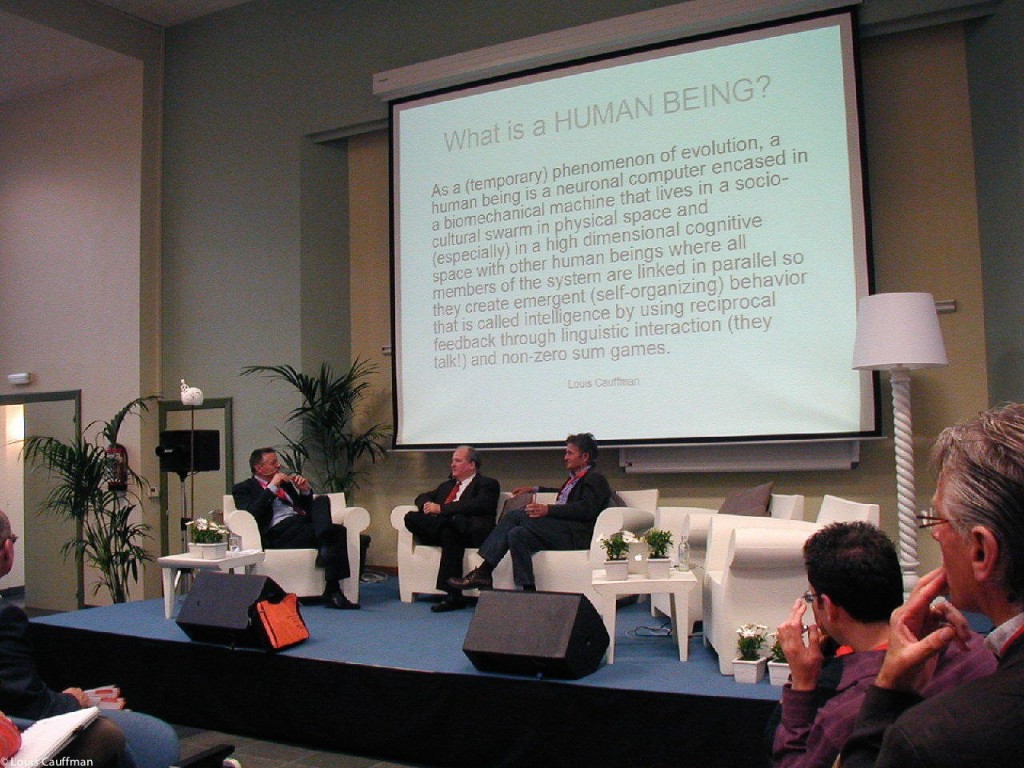
Non-specific factors
Herein lies the answer to the Holy Grail question: what ALWAYS works in good coaching/therapy? Research shows that the following factors are the most important:
- Do I feel understood by my coach?
- Do I get the correct amount of Authentic attention?
- Do I feel respected as a human being?
- Do I (re)find Hope that my future can be different from my past?
Mind you: al coaches or therapists, we can think of ourselves as being very understanding and respectful. But if the client doesn’t feel this, our convictions are worthless.
Usefulness question
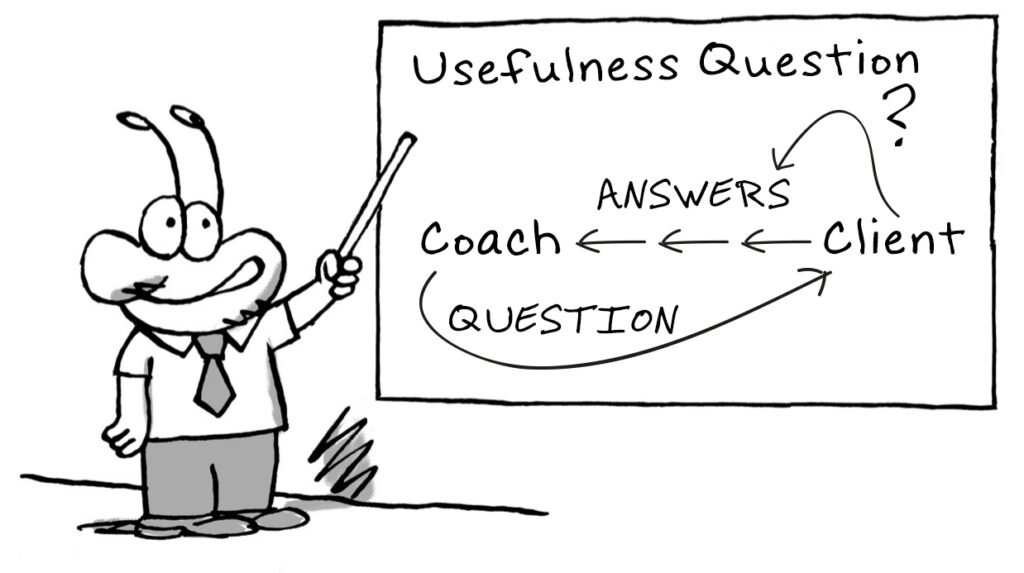
“Is what we have discussed so far useful to you?”
The usefulness question is a simple and powerful way to invite the client to comment on what is going on in the working relationship.
When the coach asks follow-up questions about the client’s answers, he helps the client to formulate a detailed description of what is useful whereupon this description can become a prescription.
Positive and respectful approach
The term ‘Positive’ does NOT refer to positive thinking: if you look at everything in a positive way and see the beauty in everything, you can positively think away the hunger in the world (the same with terminal illnesses, war, climate change, etc.). This definition of positive thinking is reserved for naive people and happiness gurus that, at best, have zero effect and, at worst, are a danger to public health.
Positive refers to: knowing that there is exactly the same amount of liquid/reality in a half-empty bottle, we help the client to see that the bottle is also half-full because then that view on reality becomes a resource.
Respectfully refers to:
By treating someone with respect, we honor their dignity. Showing respect means addressing ‘the human-in-the-client’ and accepting his complaints, symptoms and idiosyncrasies as valuable assets. Respect is, like love, a verb.
Priming
Branch of social psychology where one studies the major consequences of small unconscious influences on thinking, feeling, acting and interacting.
Problem
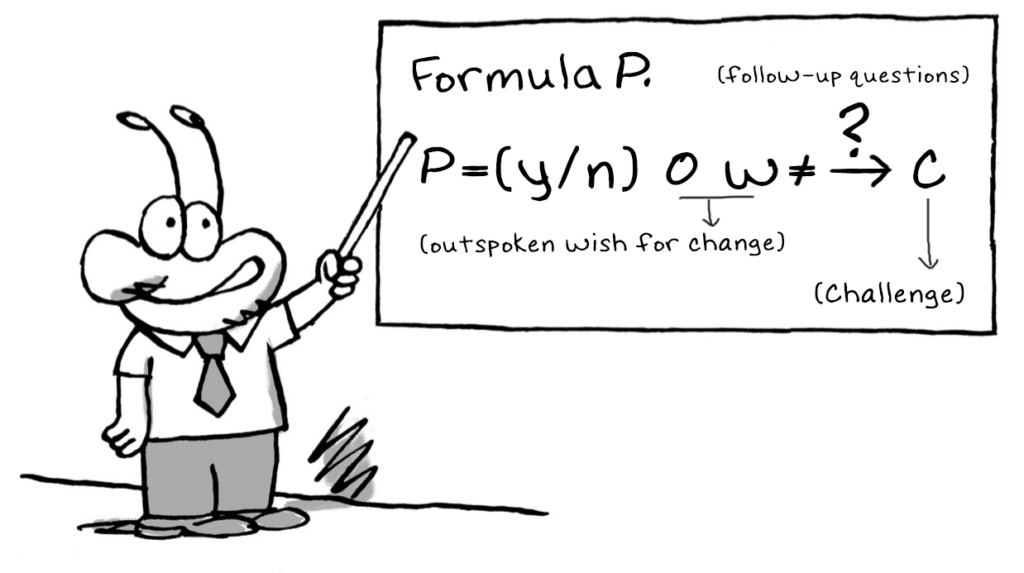
A problem can be seen as an (un)spoken wish for change which, if asked the right questions, can be translated into a challenge.
Result: the more problems, the better because the more challenges.
Procrustes, Bed of
Innkeeper in ancient Greece who let travelers stay for free provided they fit exactly in the bed made by Procrustes. He had the annoying tendency to stretch too short travelers and chop off a piece from the too tall visitors.
Procrustes’ bed is a metaphor for many evidence-based and/or protocol-based models that work according to the ‘one size fits all’ principle.

Resources
Seeing and thinking in terms of resources is the HEART of the solution-oriented approach.
The generic definition of a resource is: anything that the client can use to achieve his goal.
Mind you: a resource IS not something in itself like a thing but becomes a resource if you handle it in the right way. A half-empty bottle contains exactly the same reality as a half-empty bottle, but with half-full bottles it’s easier to survive in the desert.
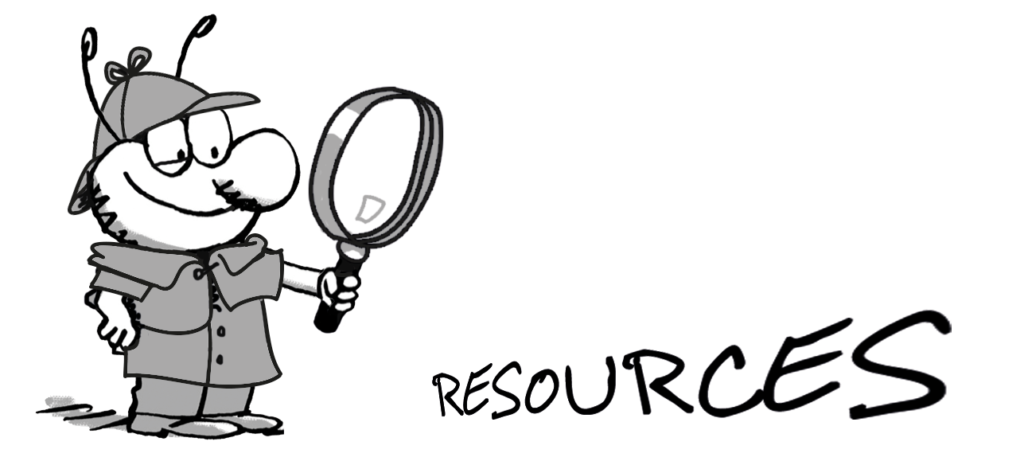
Scaling questions
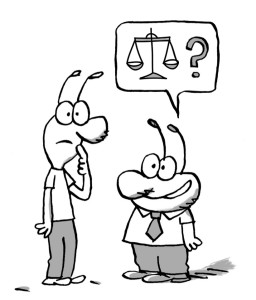 >
>
Icon of the solution-oriented approach. A brilliant technique that encompasses the complete epistemology of solution-focused thinking. It is a technique and no more than that. It is counter-productive to reduce the solution-focused approach to it.
T.E.A.M
Solution-focused working is always about working together so that team stands for ‘Together Each Achieves More’.
Resilience
Every human being and every human system come fully equipped with resilience which in itself is a resource. Resilience is the evolutionary ability to undergo, cope with, get through, and learn from life’s disruptive events so that coping with the next disruptive life event will be a little easier.
Non-committal working relationship also called: non-committal position
If a client has no request for help, the working relationship ends up in a non-committal position. It is therefore obvious that someone who has no request for help will not commit to do anything with the help you offer him. In other words, you don’t get a mandate from him or her to act as a coach.
However, it is good to keep in mind that there is contact and that this contact, even if it is of a non-committal nature, is the starting point from which we launch our interventions! That is the basis on which you can build and try to create a committal working relationship.
Appreciation
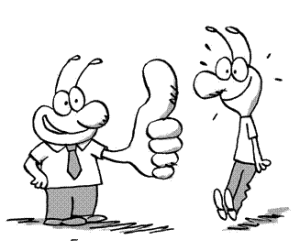
Also known by the term ‘complimenting’ and especially as ‘supplementing and completing’.
Easy to remember when you know that the word appreciation in German is ‘Wertschätzung’ and in Dutch ‘waarderen+ waarde eren’. this signifies giving value to something worthwhile.
Resistance
Does not exist. Is an outdated concept that we used to comfort ourselves with when our interventions didn’t work. Then it was just resistance, read: the fault of the unwilling client.
This useless concept has now been replaced by a more useful concept: directional instructions or stage cues.
Working hypothesis
In our profession, it is best not to live under the illusion that we possess Nobel Prize-winning truths that allow us to manage the lives and works of others or ourselves. It is more respectful, courteous and humble to keep in mind that our work is to help clients manage their (working) lives in an alternative way. To this end, we use disposable working hypotheses: if they turn out to be useful for the client, we go ahead and if not, we dump them. This does not mean that we just do something, on the contrary!
Miracle Question
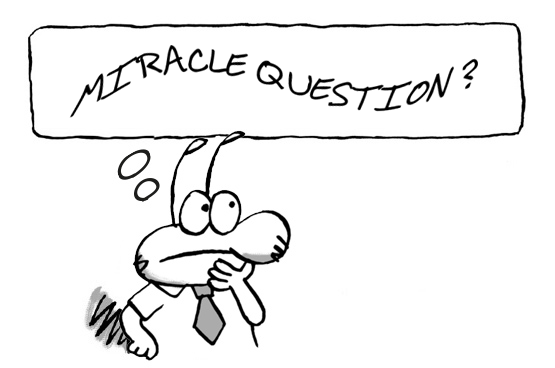
Icon of the solution-oriented approach. A brilliant technique that carries like a hologram the complete epistemology of solution-focused thinking. Remains, however, a technique and no more than that. It is counter-productive to reduce the solution-focused approach to it.
Yes-Setting
Yes-setting is a powerful conversation technique in which we present our interlocutors with obvious matters to which one can only answer with ‘yes’. The use of yes-setting creates a constructive context that leads the rest of the conversation in a useful direction.
Seven Step Dance

What do you do concretely in the contact with a client? It takes two to tango.
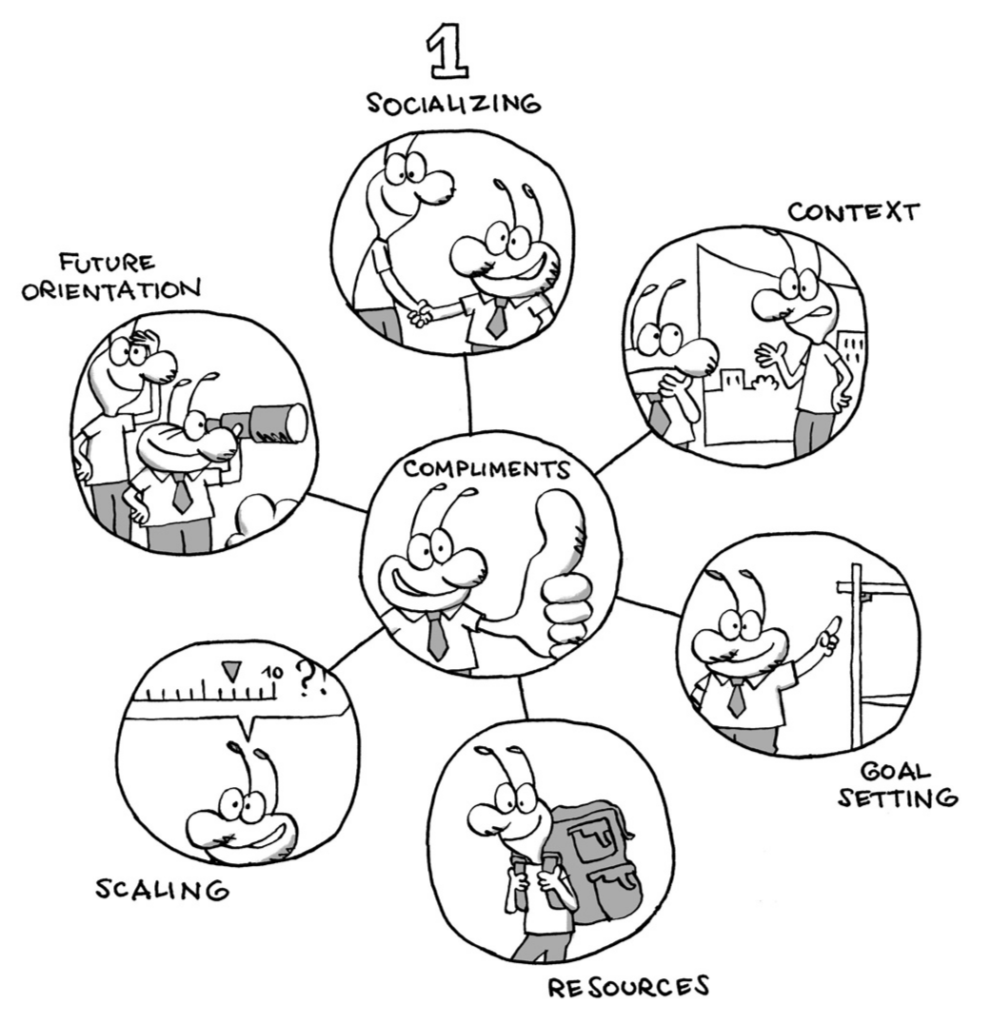
Searching Relationship
Also called: Searching Position
If the client has a request for help that is not workable, he continues searching but is not able to find a solution.
The client does have a request for help and is therefore motivated to work on it. The only problem is that his request for help is packed in such a way that he does not get the package open. In the searching working relationship, the client enters our solution shop, puts his package on the counter, tired and frustrated, and hopes that we will open it in his place. That is not a matter of unwillingness. On the contrary, it is a genuine request.
The client is constantly looking but he is looking in the wrong way and in the wrong place. Our task is to ask him questions in order to help him make his unworkable request for help workable, in other words to translate it in terms of the useful goal checklist: practical, realistic, realizable, observable in behavioral terms and preferably from small to large. That translation IS change.
 LOUISCAUFFMAN.COM
LOUISCAUFFMAN.COM